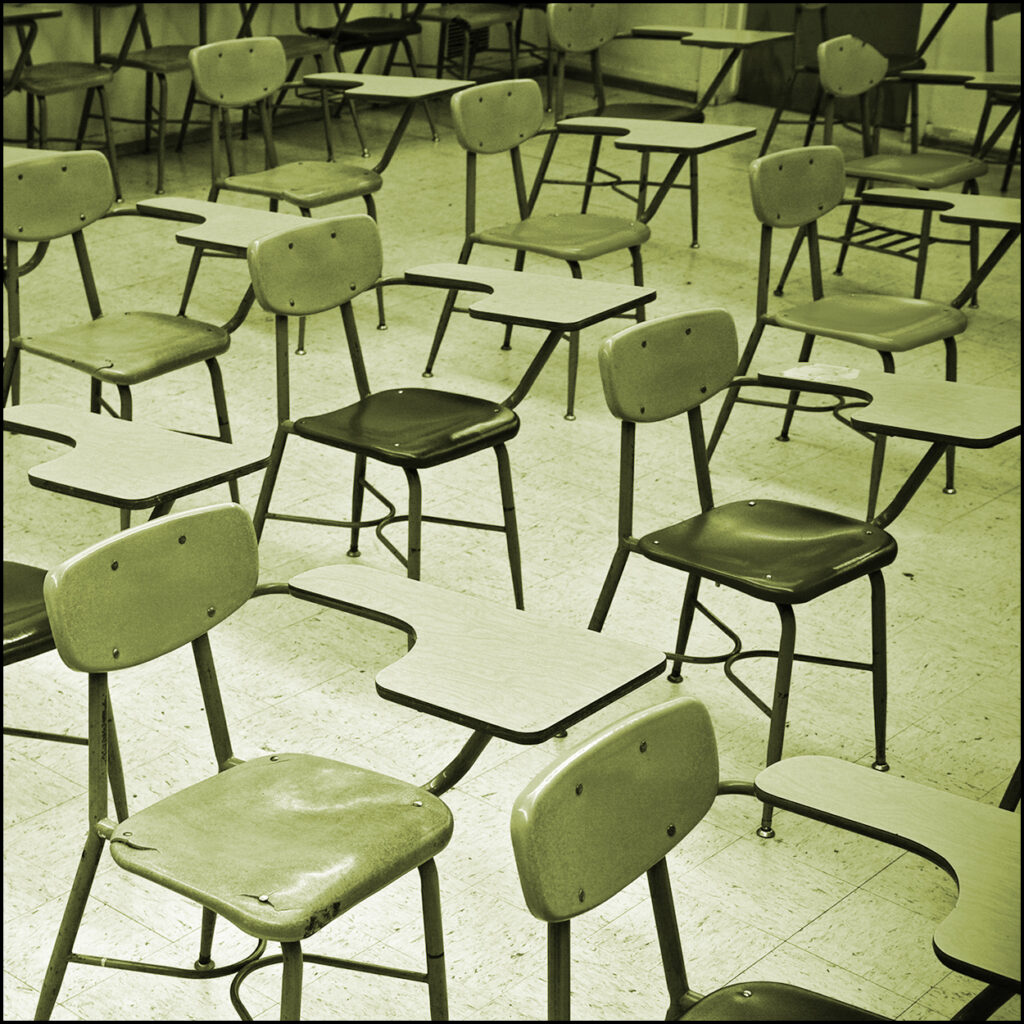“Education is not something which a teacher does, but that it is a natural process which develops spontaneously in the human being. It is not acquired by listening to words but in virtue of experiences in which the child acts on [their] environment.”
– Dr. Maria Montessori (The Absorbent Mind, 3)
Non-negotiable: Public Montessori Part II
Last week I started discussing the challenges Montessori programs might face when being implemented into a public school system. These struggles can vary from small to large. And when looked at in their totality, they can have a devastating effect on a Montessori program.
The parent of a child I had the privilege to work with some years ago responded to last week’s blog, Part I. She shared, “I’ve always explained to people who are unfamiliar with Montessori that public Montessori is a blend of Montessori and Traditional. Kind of like your article states, because of all the traditional testing and the sheer number of children in the classroom. I don’t believe that a teacher, let alone one without an assistant, can possibly apply the proper methods to be true Montessori.”
I found her comments to ring true to a great degree. Within public schools, we are asked to compromise a number of Montessori principles. Some of these compromises we can live with while some we simply cannot. To those we can’t, I refer to them as the ‘non-negotiables.’ And, believe me, the public school system has its own set of ‘non-negotiable’s too.
I recently began working in a new role within our newest public Montessori school. It’s a growing program, this school year marking its fifth. This school also happens to be a dual language program, meaning teachers need to hold both a bilingual certification and Montessori certification. We have come to call this teacher a unicorn, because it is quite difficult to find.
Most of our Montessori guides have come here from other countries, bringing with them their rich cultures and their Montessori teaching experiences with them. It’s a tall order to ask teachers who have collected most of their experience in private schools from other countries to step over to public Montessori here in the states. It is difficult for them to see past the many compromises and to cut through the never-ending red tape.
The Three Biggest Challenges a public Montessori Program will Face
Unless you are exposed to or trained as a Montessori educator, many aspects of the Montessori philosophy can feel quite alien. This is what I referred to last week as ‘hippie dippy’ peace. love and understanding.
I remember when in my training program, one of our trainers made a comment to the class early on. She shared that she struggles most when working with experienced, traditional school teachers who are transitioning into the Montessori world.
I wasn’t sure what she meant at the time. However, as our training progressed, I began observing things. It seemed that only a handful of my classmates would consistently engage in debates with our trainers.
These individuals were almost always traditionally trained teachers. And sometimes, these debates could get ugly.
In defense of these teachers, however, I believe their biggest frustration lies in the fact that our training was presented to us assuming ideal teaching circumstances. These teachers had worked in the real world and saw how outside factors severely impact learning. Things such as poverty, trauma, unstable home environments, etc.
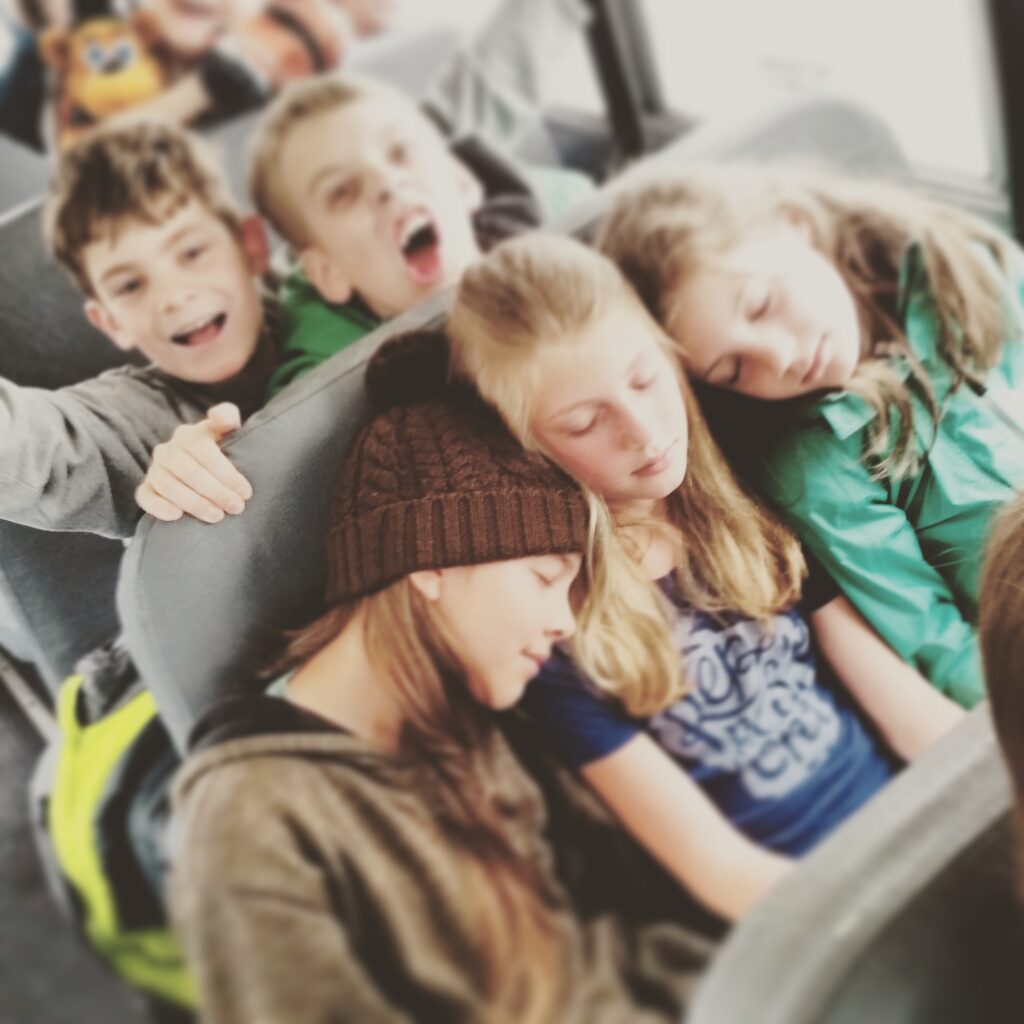
These unfortunate truths reared its ugly head the moment I stepped into my first classroom.
On the other hand, I’ve also come to the conclusion that once you have your head wrapped around a certain pedagogy, it is extremely difficult to unwrap your head from it. And the biggest struggle for the adult seems to lie in shifting one’s mindset from ‘adult-centered’ to ‘child-centered.’
Although I am new to my school and my role, I have quickly come to see some of the obstacles our new program faces. In my experience, here are the three biggest challenges a public Montessori program will need to overcome.
A strong public education system is essential to the individual and collective well-being of our country and its people, and to the development of an informed and engaged citizenry, without which no democracy can exist and flourish.
AFL-CIO
1. Montessori Trained Leadership and Support Staff
Those in leadership roles within a school are the key to any success a program might have. Success requires leaders who are compassionate but firm, who encourage their staff to work together in solidarity towards the same goals while creating a safe learning environment for its students.
Clearly, this is much easier said than done. Without strong leaders, staff morale ultimately drops low, teachers lose faith in their leaders’ decisionmaking and inner conflict is almost certain.
In a Montessori program, leadership is even more vital. When I began teaching, I believed every Montessori program must have Montessori-trained leadership. This is the ideal, of course. But, often not the reality within a public-school system.

The next best choice would be those leaders who are ‘Montessori-friendly’ or ‘Montessori-inspired.’ Leaders who are willing to stretch their wings. Leaders who try to understand what it is their program is trying to accomplish. Those who are willing to let go of ideas and practices they have come to know in the traditional world, and to embrace new ideas and approaches. Put simply, open-minded.
The same can be said for support staff as well. This includes special education teachers, ELL teachers, physical education teachers, art teachers, speech pathologists, music teachers, school psychologists and counselors. And most importantly, this rings truest for paraprofessionals and teaching assistants who work alongside the Montessori guides. Their buy-in is planted firmly on the ‘non-negotiables’ list.
It is not uncommon to see a public-school classroom packed in with 30, 35 sometimes even 40 students. In these situations, the relationship between the lead teacher and their assistant is critical.
It can be intimidating to walk to into a Montessori classroom for the first time. I’ve always taught in the upper elementary. I must admit, when asked to help in a primary or lower elementary classroom, I feel nervous too. I don’t begin to feel comfortable until I understand the rhythm of the classroom and the dynamic of that particular classroom community.
Then I think of those teaching assistants with a traditional background who are assigned for the first time to a Montessori classroom. The role of adults there looks extremely different.
When I started as an assistant in a well-established Montessori classroom, the first piece of advice the Elementary guide gave to me was this: “You are basically like a piece of furniture. You act as another resource in the classroom for the children to use at their own discretion. They should come to you.”
This is what I meant earlier when I said the biggest struggle for the adult seems to lie in shifting one’s mindset from ‘adult-centered’ to ‘child-centered.’ In the traditional world, we are used to being the center of attention. We walk into the room and students are expected to sit up straight and wait silently for adult instruction. We are there to engage them.
In a Montessori classroom, the child is there to engage themselves. We are only there to help them find their own way.
2. Standardized Testing Requirements
Standardized testing plays a momentous role in our Nation’s education. The modern educational practice has ignited a national debate about the effectiveness of testing and how well they truly measure student achievement.
I’m not sure if there was ever a way around this phenomenon. You could point to politics and profits, for sure. But standardized computerized testing grew in importance alongside our technology.
The goal of these assessments is to provide a measure to evaluate student performance across state, national and even global standards. This means standardized assessments can be mandated at three different levels: District, state and federal.
Low scores can prevent a student from advancing to the next grade level, from getting into their preferred high school or it might even lead to school closings.
Meanwhile, high test scores factor into continued federal funding for public schools being held to the highest standards of accountability (please note, the same testing mandates do not apply to private schools).
Proponents say these tests measure student achievement, ensure teachers and schools are accountable to taxpayers and provide consistency to our students.
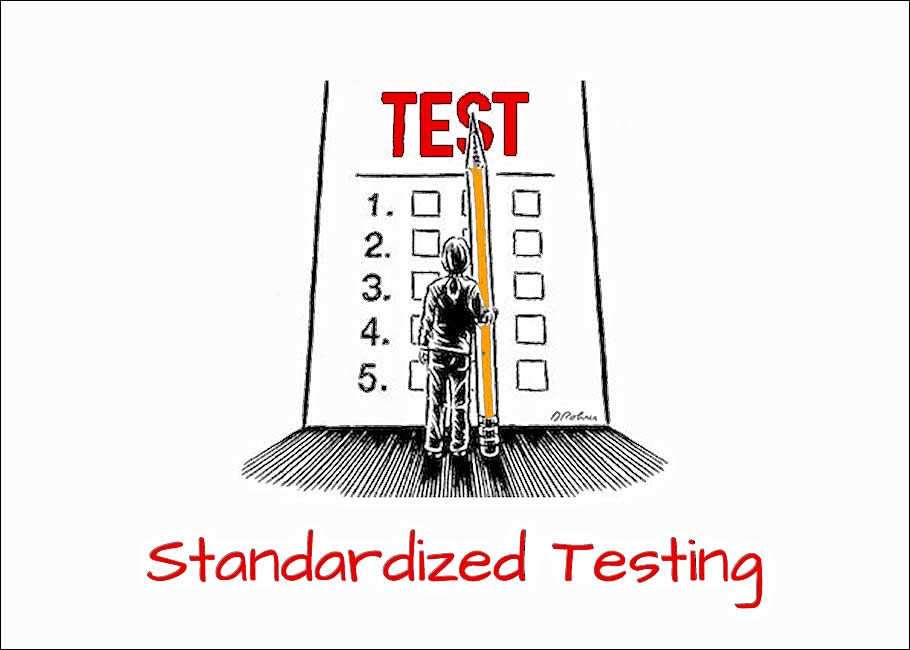
Opponents say these tests promote a “teaching to the test” curriculum, undermine critical thinking and are not the best evidence of student performance.
For me, the greatest misfortune is that most students tend to feel a great deal of pressure over doing their best on standardized assessments. This can lead to low self-esteem and test anxiety.
Bottom line, students are tested in our country more now than ever before. And, what’s the consequence of not testing these children with a public school? Loss of funding. Therefore, this is one of those ‘non-negotiables’ within a public Montessori program.
True Montessori philosophy approaches assessments quite differently. Children are assessed through adult observation and through demonstration. The three-period lesson is a method all Montessori primary teachers use to introduce new vocabulary and concepts to a child. It involves three steps: Naming, recognition, and recall. Demonstration of mastery of a new skill or concept can be observed during three-period lessons.
As a Montessori educator, I’ve always felt the most important skills we can help a child develop are those we cannot truly assess and cleanly quantify. This includes critical thinking, problem solving, collaboration skills and personal work ethic.
3. Protecting the three-hour Morning Work Cycle
Dr. Montessori observed, when in a prepared environment and uninterrupted by adults, would children were able to concentrate over time. This would then be followed by a period of ‘false fatigue’ (which I have come to equate to hunger or low blood sugar). They would then return to focusing on more work.
These cycles of time lasted about 2.5 to 3 hours. For this reason, it is known in the Montessori world as the “three-hour work cycle.”
The best time of day for anyone to clearly think and focus is first thing in the morning, after a full night of rest and a well-balanced breakfast. Therefore, most Montessori Schools establish and protect the three-hour work cycle in the mornings.
Many obstacles can act to interrupt a three-hour work cycle.
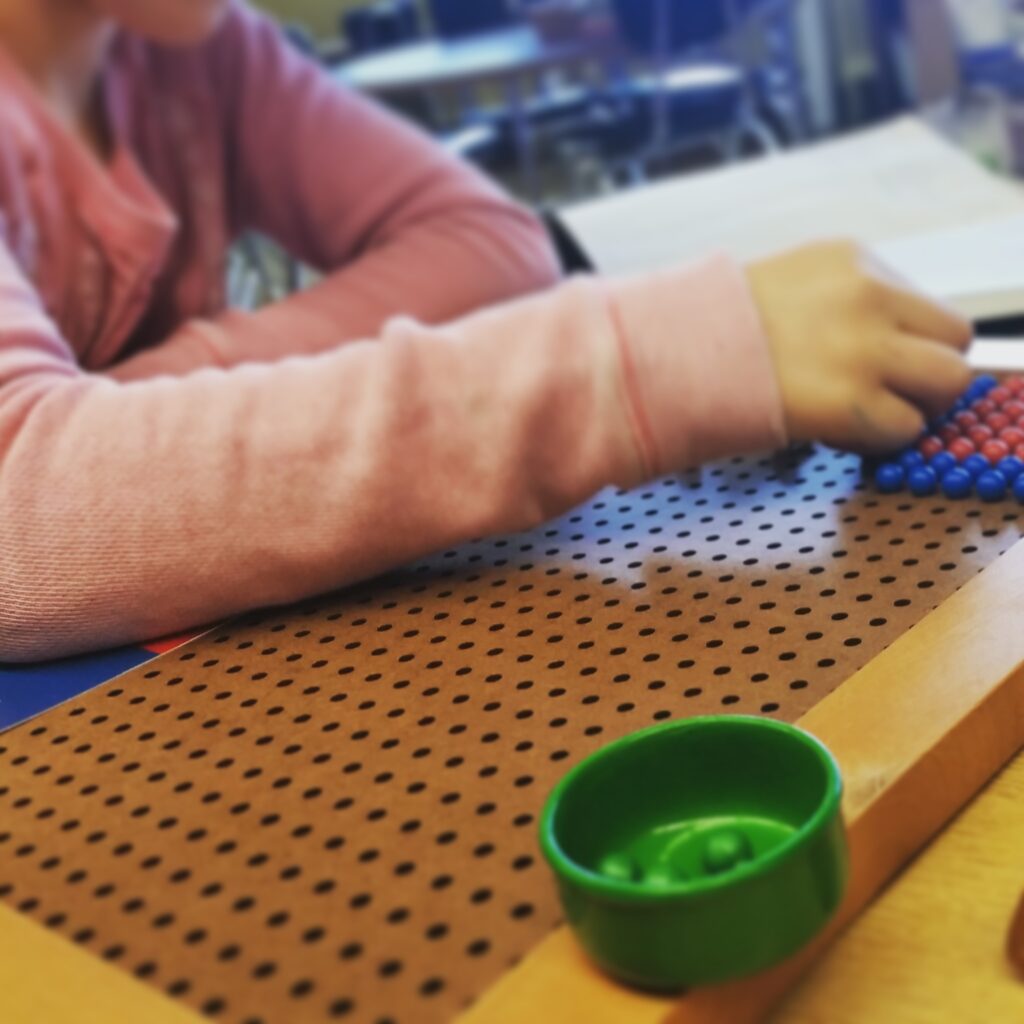
These things might include: A child not getting a good night’s sleep; eating a sugary breakfast or not having breakfast at all; arriving late to school; a child pulled in and out of the classroom for various reasons (‘gym class,’ working with specialists, etc.); school bells & phone calls; scheduled bathroom breaks; emergencies or drills; school-wide events; bus schedules, leaving early for an appointment, you name it.
Therefore, it is absolutely vital for school leadership, its staff (and parents!) to be committed to protecting the three-hour work cycle. It’s one of our non-negotiables!
I believe there is truly only one question all adults need to ask themselves when working inside a school during a school day: “What’s in the best interest of the child?” If decisions are made with the best interest of the child in mind, then those decisions will be the right ones.
Montessori Principles Can Change Lives
My experience as a teacher lies entirely within a public Montessori program. My experience as a student, on the other hand, lies within the traditional public school system. This is true for most of us.
Now having experienced both worlds, I’ve often said if there is such a thing as reincarnation, I would love to come back as a child educated with Montessori principles. This is true for many reasons.
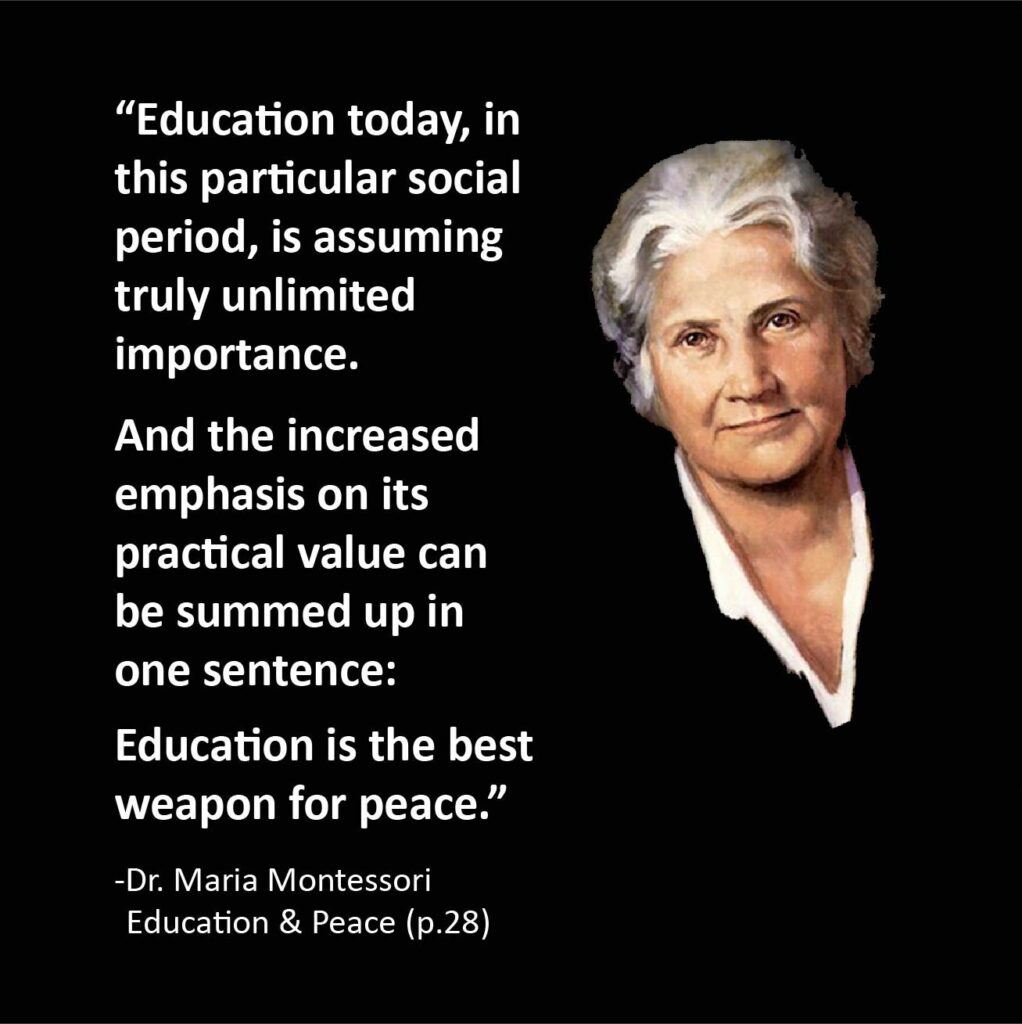
The biggest being, the Montessori method helps children recognize their own interests and potential. It encourages them to find their own reward system intrinsically, to self-direct and self-correct. But most importantly, it empowers human beings to not be afraid of taking their own initiative.
A brilliant teacher at our dual language Montessori school recently said, “Montessori changes lives. I know this because it changed mine.” I’ve reflected on her words and I believe she’s right. It can change adult lives just as much as it can change the lives of children.
I know it changed my life for the better.
Do you have thoughts on non-negotiables within a public Montessori program? Do you have a suggestion for another blog topic? Please send me an email with your ideas or experiences at grumble.services@gmail.com.
If you find this article helpful, please share it. Or better yet, please join us if you have yet to do so. Subscribe below and receive articles like this one in your email box weekly. Thank you!
Read More: ADHD IN CHILDREN: Can it be treated without Drugs?
All Rights Reserved • © 2021 Grumble Services LLC • grumbleservices.com

References and Read More:
The Montessori Approach to Introducing New Vocabulary
What about the three-hour work cycle?



